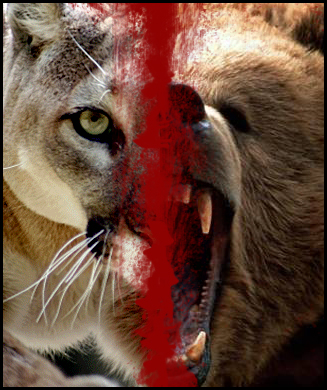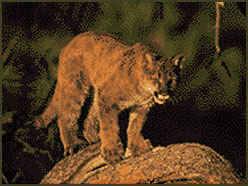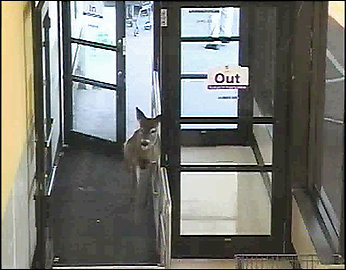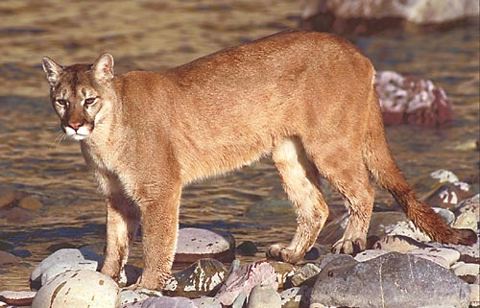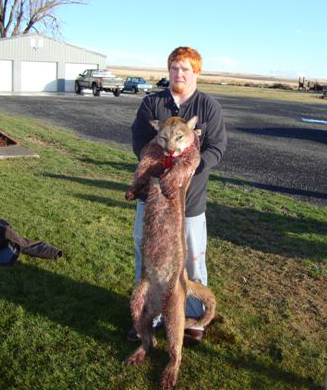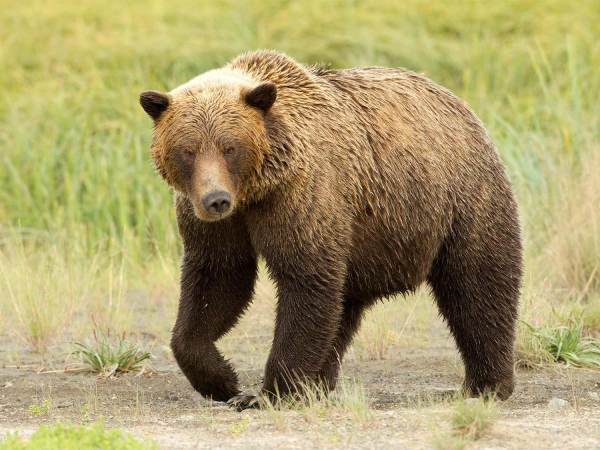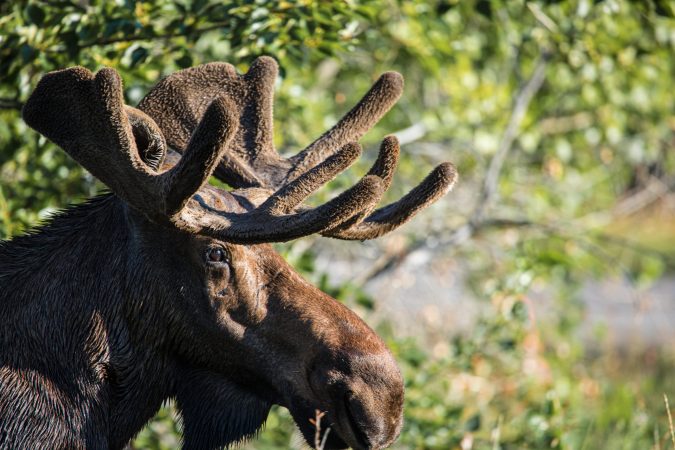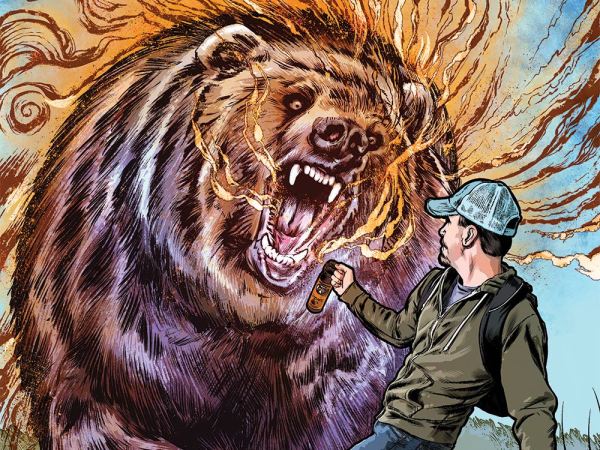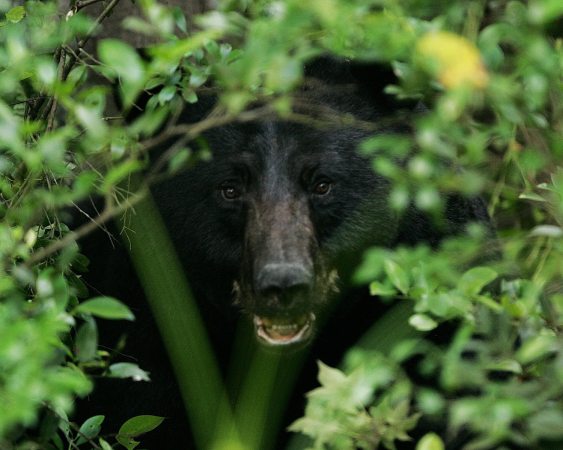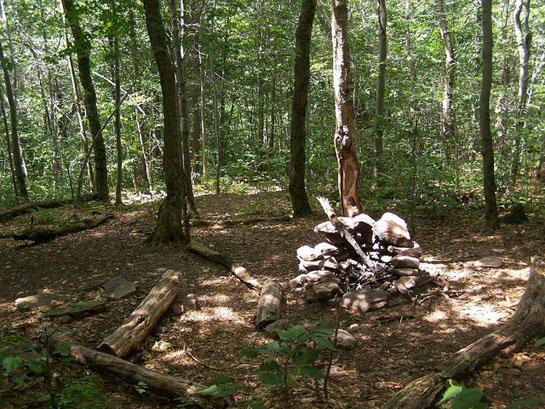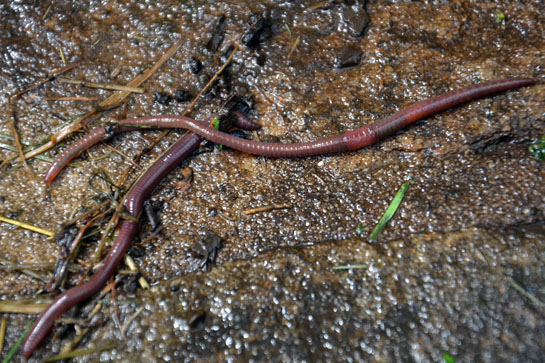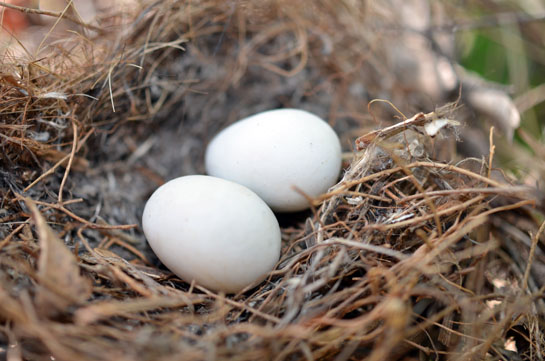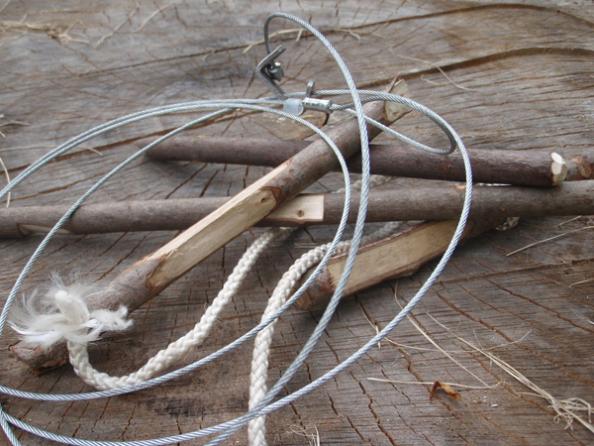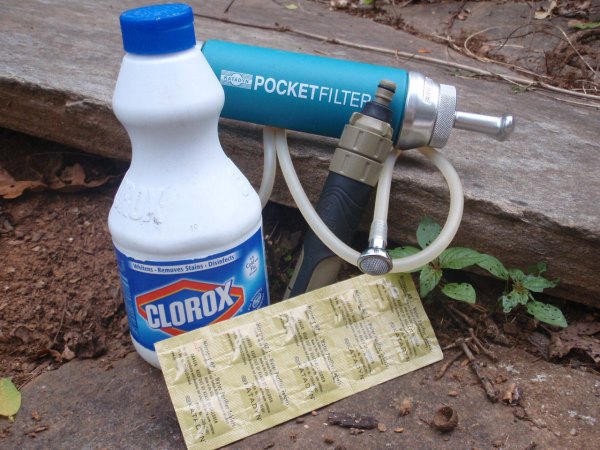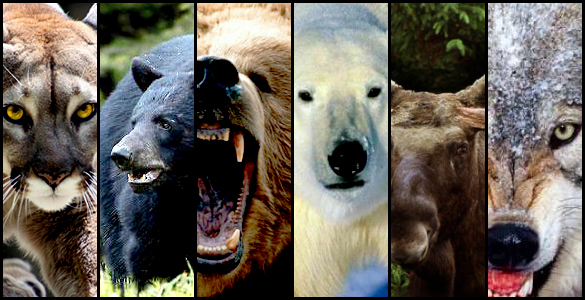
In the warm and fuzzy world of some folks, wild animals all have big moist brown eyes, cute noses, and a cuddly personality. But that doesn’t exactly square with reality. Take, for example, the incident involving Mark Reynolds, a 35-year-old guy who went out for a mountain bike ride in California in January 2004, and was later found dead and partly eaten by a cougar (mountain lion). Nothing warm and fuzzy about it.
Of course, the warm and fuzzy crowd will claim that was an anomaly. Well, try telling that to the family of the 41-year-old Arkansas woman who was killed in her own front yard by a cougar in May 2003. Or the incident in Colorado in 1999 when a 3-year-old boy went missing and was later found to have been dragged away and killed by a cougar.
I could go on and on. The list is really pretty long. And that’s just cougars. What about bears, or moose, or bison, or coyotes, or …? Let’s pause momentarily for a dose of wildlife reality. There are lots of wild animals that will attack a human, sometimes with fatal results. It does no good to play the denial game. The only good thing we can do is learn the truth and then figure out what to do if we are ever in a violent confrontation with a wild animal.
Use Common Sense in the Backcountry
Before getting into specifics, let me say that the best way to avoid problems with wildlife is to use common sense. Be aware of what’s around you, what kind of animals you are likely to encounter, and the danger they pose. Avoidance is the best defense, so keep your distance.
Take Steps to Prevent Attracting Wildlife into Camp:
- Keep a clean camp. Thoroughly wash all cooking utensils after use. Seal uneaten food in airtight containers stored in bear-proof canisters, or suspend it from a bear wire away from sleeping areas.
- Treat garbage just as you would treat food — either store it in bear-proof containers or hang it from a bear wire away from the campsite until you can haul it out of the area.
- Do not take food into a tent.
- Do not sleep in the same clothes you cooked dinner in. In fact, don’t even take those clothes into the tent with you.
- Remove pet food from the area. Pet food attracts bears directly and can draw the small wildlife that is prey for cougars.
- Never feed wild animals such as deer, raccoons or squirrels that can attract cougars.
Even after you do all that, be prepared for whatever might happen. In my book, part of being prepared is carrying defensive “tools” that can range from firearms, to a substantial knife, to a club, to deterrents such as pepper spray, to whatever you can lay your hands on as you fight for your life. And there are other techniques that can be used to discourage an up-close-and-personal encounter. We’ll talk about these as we go along.
Survive a Bear Attack
All bears are dangerous, but regardless of species you are at greatest risk if you surprise the bear or get between a mother and cubs. Even the “less dangerous” bears will prey opportunistically when they are hungry. And they will attack if you appear to be competing for their food sources or if you corner them and they feel threatened.
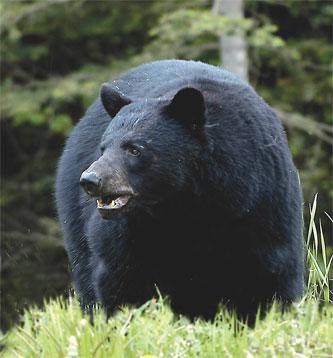
Black bear are reputed to be not much of a threat to humans, but they can scare the willies out of you when they wander into camp looking for a free meal. However, contrary to their mostly benign reputation, black bear have been responsible for more than fifty human fatalities in North America in the past hundred years. One such incident happened in May of 2000 when a female hiker was attacked and partially eaten by a 112-pound female black bear in Tennessee.
####What to do if a Black Bear Comes Into Camp
If a bear comes into camp:
- Do not run because that will trigger an attack response.
- Keep all your movements slow and deliberate.
- Do not approach the animal.
- Pick up small children so they will not be perceived as prey.
- Bang pots and pans together or make other loud noises.
- Wave your arms above your head to make yourself appear larger.
- Leave an escape route open so the bear won’t feel cornered and forced to fight its way out of the situation.
- Move upwind of the bear so it can identify your scent as human (not its normal prey).

Avoidance is the best survival tactic. A grizzly doesn’t particularly care to eat you, but it will hurt or kill you if you surprise it. And they have been known to consume human flesh. Make a lot of noise as you hike, especially on blind corners and in dense brush, and maybe the two of you will avoid each other. If you encounter a dead animal carcass, get away from it because it might belong to the grizzly. Of course avoid cubs. Keep dogs under control, because they can irritate a bear and lead it back to you. Do not travel alone.
How to Avoid a Grizzly Attack
- Stop, remain calm, back away slowly while speaking in a calm voice. You are trying to show the bear that you are being submissive and yielding to his territorial supremacy.
- Do not turn your back on the bear or run; that will stimulate an attack.
- Avoid direct eye contact, because that is considered an act of aggression.
- A grizzly might bluff-charge…or not. If it lowers its head and pins ears back, it’s coming.
- Submit. Lie face down on the ground, cover your head with your arms and hands and play as dead as possible. You might be bit or clawed, and then the bear might leave… or not.
- If the bear continues to maul you, in spite of your playing dead (an indication that it wants you for food), you might have to fight for your life using any available weapon (knife, stick, rock, fingernails), focusing your counterattack on the bear’s eyes and nose with as much violence as you can muster.
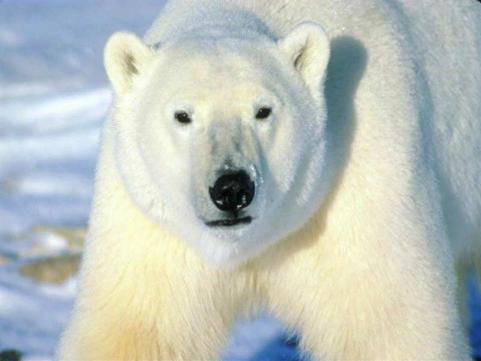
Life is tough for polar bears, and they’re always actively looking for their next meal. If you happen along and cannot protect yourself, they will take advantage of the situation. In some circumstances, a polar bear will stalk until it can sneak up on its victim. When a polar bear becomes agitated, it will snap its jaws and make a loud huffing noise, stare directly at you, lower its head and press ears back against the side of its head. Sometimes, they might stamp their feet.
What to do if a Polar Bear Charges
- It won’t be a bluff, so consider it a serious attack intent on doing damage.
- Making a lot of noise (especially by a group of people) might drive the bear away.
- If that fails, use whatever deterrent and/or weapons you have at hand.
Survive a Cougar Attack
Big cats can appear out of nowhere, as they’re experts at stalking prey. You don’t want your hike along a common path to turn into a nightmare, so make sure to take some precautions if you’re going out in big cat country.
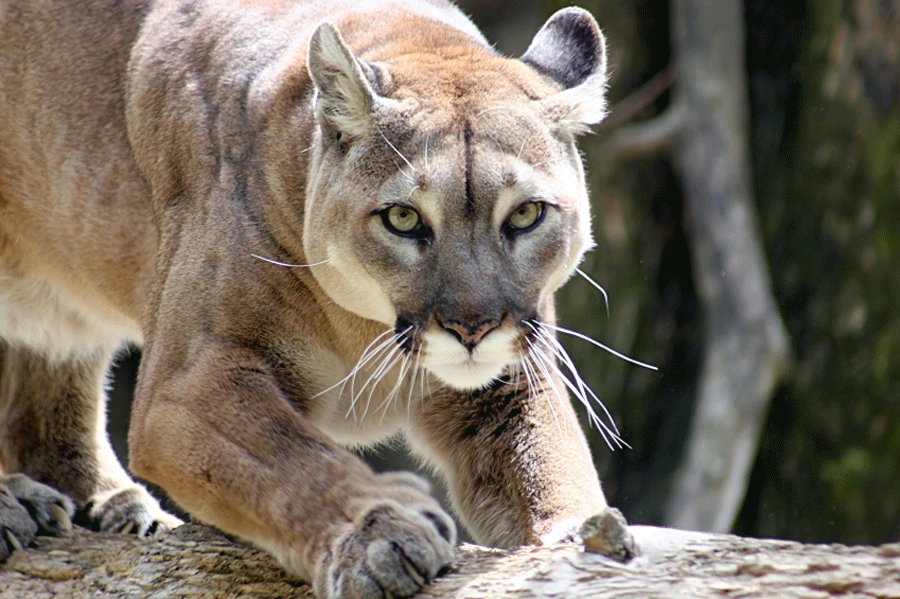
A mountain lion is one of the few predators that will deliberately stalk its victim. If it determines that you are viable prey, it will follow you until it finds the right moment to take you down. The cat generally won’t tackle humans who are traveling in a group of two or more. All the general camp hygiene rules for bears also apply for cougars.
What to Do if You Encounter a Cougar
- Stop and stand tall. Do not run.
- Try to appear larger than the cougar.
- Never take your eyes off the animal or turn your back.
- Do not crouch down or try to hide.
- If the animal displays aggressive behavior, shout, wave your arms and throw rocks.
- If the cougar attacks, stay on your feet. If you go down, you’re in trouble.
- Fight back aggressively with anything you can get your hands on (knife, club, backpack, rocks, etc.) Gouge your fingers into the cat’s eyes. Fight for your life with as much violence as you can muster.
Survive a Wolf Attack
Wolves, and their relative the coyote, travel in packs, so if you see one be prepared to fight off the rest of them hiding in the bushes. Find out how to survive an encounter with one of these ancestors of your hunting dog.
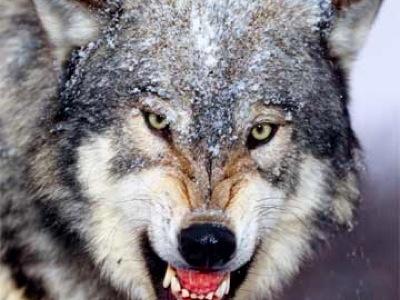
Wolf and coyote (a.k.a. prairie wolf) attacks on humans are becoming more common. These animals are cunning and will stalk their prey, sneaking in from behind to nip and rip at leg muscles to disable their victim. Once you’re down, the pack will swarm you.
What to Do if You Encounter a Pack Wolves or Coyotes
- Don’t run, because that might trigger an attack. You can’t outrun these animals, as they can hit speed above 30 mph.
- Yell at the animal to make it back off.
- These animals often run in packs and engage in coordinated attacks. If you’re surrounded and you’re alone, it time to start shooting to kill, or you’ll end up on the dinner plate. These are carnivores and you are carne.
- Do not lose your footing. Once you go down, the pack will rush in and rip you apart.
- If you are surrounded and are in a group, position yourselves back to back, facing the animals. Use clubs, knives, sharpened sticks (spears), rocks, or anything else you can grab to fend off the attack.
Survive an Attack from a Non-Predator
Predators aren’t the only wild animals responsible for human deaths in the backcountry. Many species of big game that hunters regularly target have been known to turn around and make the hunters their victims. There are common signs to watch for when out in the woods to avoid an attack by one of your favorite big game species. Follow these tips to make it home safe.
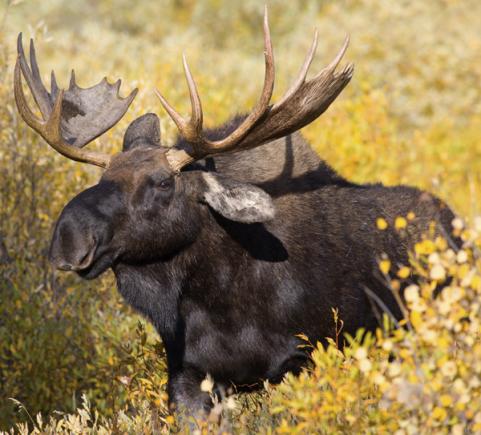
The argument can be made that the most dangerous animal in the woods is a moose. They are huge, and they have a stubborn attitude of ownership. If you trespass in their domain, they might try to take you apart and scatter the pieces. Although they are large, they are not built for speed. Knowing that, they often choose “fight” over “flight” when they feel threatened. When attacking, moose often kick forward with front feet, knocking down the threat and then stomping and kicking with all four feet. Moose with antlers also use their racks with lethal efficiency.
What to Do if You Encounter a Moose
- Give it lots of space. Do not approach.
- Back away and change the direction of your travel.
- Stay totally clear of a calf and cow. That combination is extremely dangerous.
- If a moose approaches you, it is not trying to be your friend. It is trying to warn you.
- If the moose lays ears back and raises the hair on its shoulder hump, stomps the ground or swings its head in your direction, it is preparing for an attack.
- Back away. Get as much space between you and the moose as possible.
- Run. Unlike with a bear or cougar, you can run from a moose without triggering an attack. The moose likely won’t chase you very far.
- Get behind a large tree or other obstacle and keep it between you and the moose.
- Climb a tree.
- If the moose knocks you down, curl up in a ball to protect against the kicks and stomps. Don’t try to get up until after the moose moves away, or it will renew its attack.
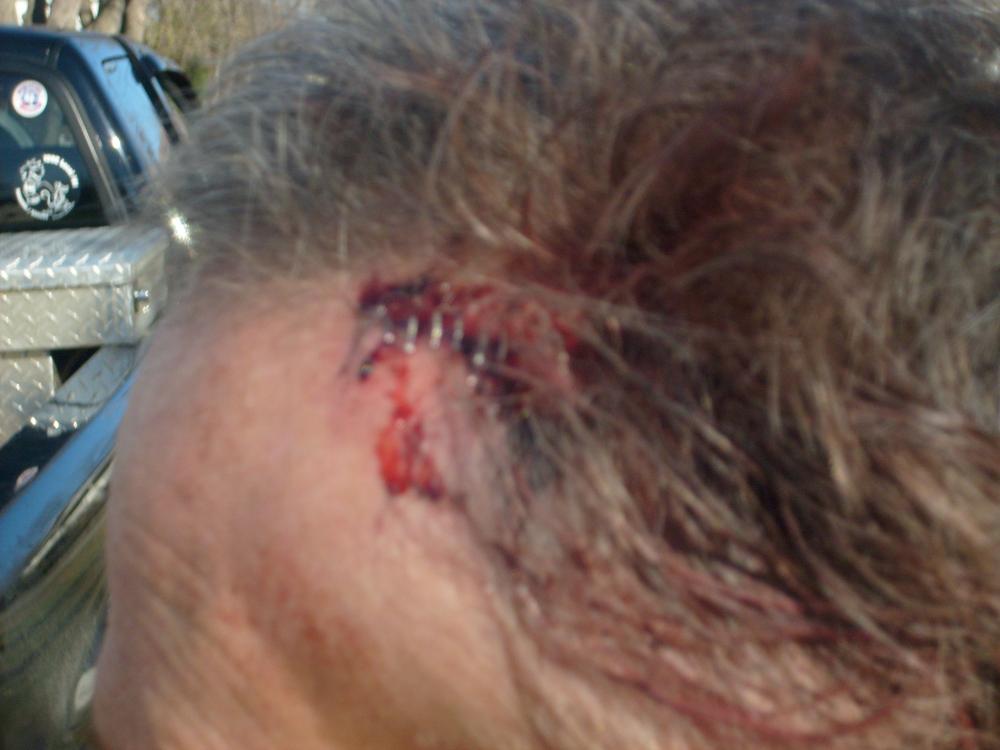
Last year in Colorado a wildlife biologist and photographer, Tom Mussel, got too close to a cow elk and her calf, and he was attacked when he stumbled as he tried to escape the charging cow. Elk and deer will attack humans when they feel cornered or threatened. The most potent threat is when a human gets close to a mother and her baby.
What to Do if Charged by a Deer or an Elk
- Do not turn your back on the animal, as they almost always charge from behind.
- Facing the animal, raise your arms and your jacket, to make yourself appear larger. Swing the jacket around to make yourself appear formidable.
- If you have a dog with you, turn it loose and that might distract the deer or elk.
- Climb a tree.
- If you are knocked down, curl up in a fetal position to protect your head, neck and organs. You might be thumped a few times, and then it is likely the animal will leave.
- If the animal has antlers, you might sustain serious injuries, so do your best to put trees or boulders between you and the animal.
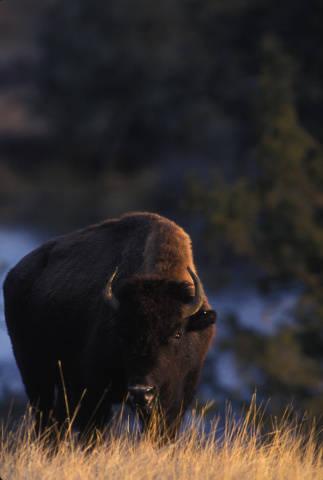
In Yellowstone National Park, bison have injured twice as many visitors as have grizzly bears. The danger in a bison/human encounter is being butted, gored, and stomped by something that resembled a fur-covered locomotive. There is a reason why there is a rule that visitors should stay at least 100 yards from bison. Generally, after a bison charged and knocks down a human, the animal will wander off and resume grazing, but not always. On a couple of recorded occasions, the bison stood over the victim. One person was head-butted back to the ground when she tried to get up, and another was gored several times while still on the ground.
What to Do if Charged by a Bison
- Run for cover if it’s close — bison might look slow, but they’re not.
- Take cover behind something large, and keep moving as the bison tries to get at you.
- Climb a tree. A bison can’t come up after you. This animal isn’t interested in eating you, it’s just annoyed by your proximity.
- Keep your distance.
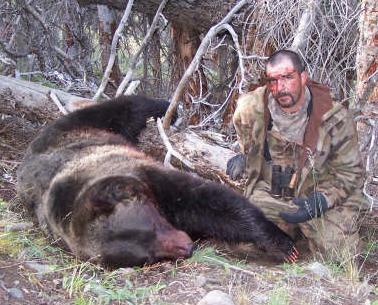
Helpful Techniques and Tools to Survive an Animal Attack
Following are some techniques and tools that can be used to help you avert and/or survive an attack by a wild animal. Not all techniques work for all animals, so apply the appropriate ones for the animal in question. In every case, keeping your distance works best. After that, use what you have at hand.
- Keep your distance
- Handgun, rifle, shotgun
- Knife
- Club
- Walking staff
- Primitive spear
- Pepper spray
- Play dead
- Make yourself big and loud
- Slowly back away
- Avoid eye contact
- Climb a tree
- Get inside a car or building
- Gouge your fingers in the animal’s eyes
- Fight for your life with all due violence
- Jump in the water and swim away from the animal
- Throw rocks, sticks, etc.
- Bang pots and pans to scare animals away
- Use a bear wire to keep food and garbage out of camp
Protect Yourself from Wild Animals with a Survival Gun
When I think about survival guns for outdoorsmen, I think of three scenarios––the first involves using the firearm as an audible signaling device. The second involves providing meat to stay alive. And the third involves self-defense. Taking things in that order (which may or may not be the order of importance in any given survival situation), we’ve tried to define what makes a good survival gun.
Signaling for Help
When an audible signal is what you need, louder is better. The sharp report of a big-bore rifle or large-caliber handgun will carry farther than the puny pifth of a .22-caliber. Shots fired in groups of three are recommended because the three-shot pattern is a universally recognized distress signal. While it might be tempting to fire into the air, safety must be considered, even in the wild. The audible signal will be just as loud if you fire into a tree trunk or a hillside, and you won’t have to worry about where those rounds will fall back to earth.
Another concern with signaling is not to “waste” ammo by firing signal shots unless you are pretty certain someone is within hearing distance. It might be prudent to save the ammo for other uses. This is a judgment call you’ll have to make using the best information you have at the time.
Gathering Food
You can’t always count on a survival situation happening in big-game country. If you find yourself stranded at a time or in a place where there’s nothing bigger than squirrels or small birds to subsist on, a big-bore rifle will be less useful for gathering food than a shotgun or a small-bore survival rifle would be. Conversely, if you’re going into bear country, you’ll want to carry the largest-caliber handgun, rifle or shotgun you can comfortably handle. That’s why it’s important to match your “survival gun” to the area and season whenever possible. While no single gun suits every purpose, revolvers do offer the option of loading the first two cylinders with birdshot to handle snakes or birds and the rest with magnum cast-bullet loads for big game. They’re also ideal for close-quarters combat should the need arise.
The trade-off, of course, is that at ranges beyond 15 yards, a shoulder-fired long gun (whether shotgun or rifle) will greatly improve accuracy. And in common handgun calibers like the .357 and .44 Magnum, rifles so chambered offer significantly less recoil than their handgun brethren, which, in light-framed versions, can kick like a mule. As you are no doubt beginning to see, choosing a survival gun is a series of trade-offs.
Self-Defense
These days, bad things can happen anywhere––even in the backcountry. It’s becoming more common to stumble across illegal activity in the woods–meth labs and other drug farms, for example–which can put you in a tough situation. I’m not going to tell you what to do in that scenario, but it doesn’t hurt to figure it out in advance and then be prepared. For self-defense a lightweight revolver is ideal. Here again, you have the option of mixing and matching birdshot loads with hollowpoint defense rounds and cast-bullet loads for hunting larger game. Shotguns also offer you the option of chambering combinations of loads, as do many of the small-bore lever-action and semi-auto survival guns in 9mm, .357 and .44.
Then there’s the possibility of an encounter with an aggressive bear or mountain lion. If you’re facing the wrath of a large predator and it comes down to shooting the animal to save yourself, you want the biggest and most powerful firearm you can shoot accurately.
Particularly when considering handguns, it’s better to use a lesser caliber that you can control and shoot well than to carry a heavy magnum whose recoil makes you cringe every time you touch off a shot. Instead of a .44, perhaps you’ll find a .41 or .357 more controllable and comfortable. The best advice I can offer is to find a local gun store with an indoor range and try several styles and calibers before you decide to buy. After that, practice until you are totally confident shooting the arms you carry.
So what do these scenarios prove? In some cases a big-bore rifle is preferable because it lets you take larger game at greater distances. At other times, however, a shotgun or small-caliber firearm is preferable (the smaller the caliber, the more ammo you can carry). And if you’re packing light for a fishing trip, a revolver is a better fit. So what is the ideal survival gun? All of the above.
The trouble is that you can’t carry all of the above into a survival situation. In fact, any equipment you’re hauling should be as lightweight and compact as possible, because every pound you have to carry drains your energy. At the same time, the equipment must be able to do the job. No firearm is perfect for every instance, but there are some choices that are tailor-made for specific situations hunters and fishermen might face.
Stowable Survival Guns
Stowable guns are ideal to slip behind the seat of your pickup, in the back of your bush plane or in the bottom of your canoe, where size and weight are not too much of a concern. This is where traditional survival guns shine–those models that disassemble and stow in small carrying cases that can be broken out for use should you find yourself stuck in the backcountry.
Great choices include:
The Henry U.S. Survival. This takedown .22 weighs just 2 1/2 pounds. It breaks down and all parts fit in the hollow stock.
Springfield Armory M-6 Scout. This fold-down model is also very compact and offers both .22 and .410 barrels.
